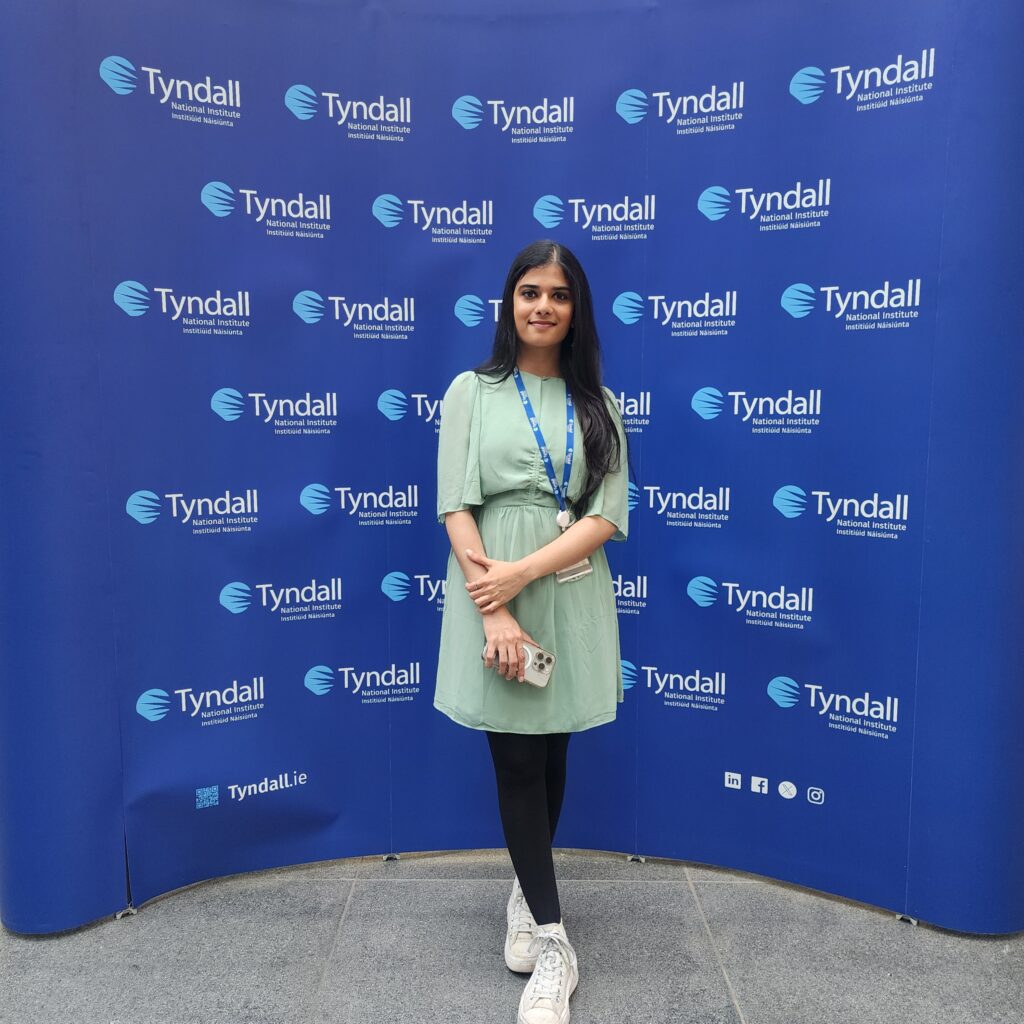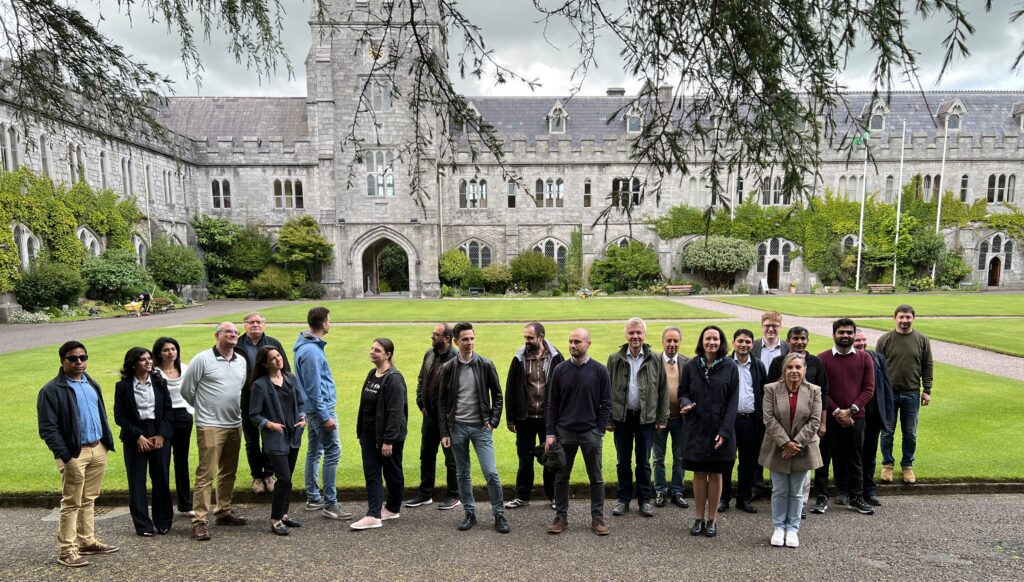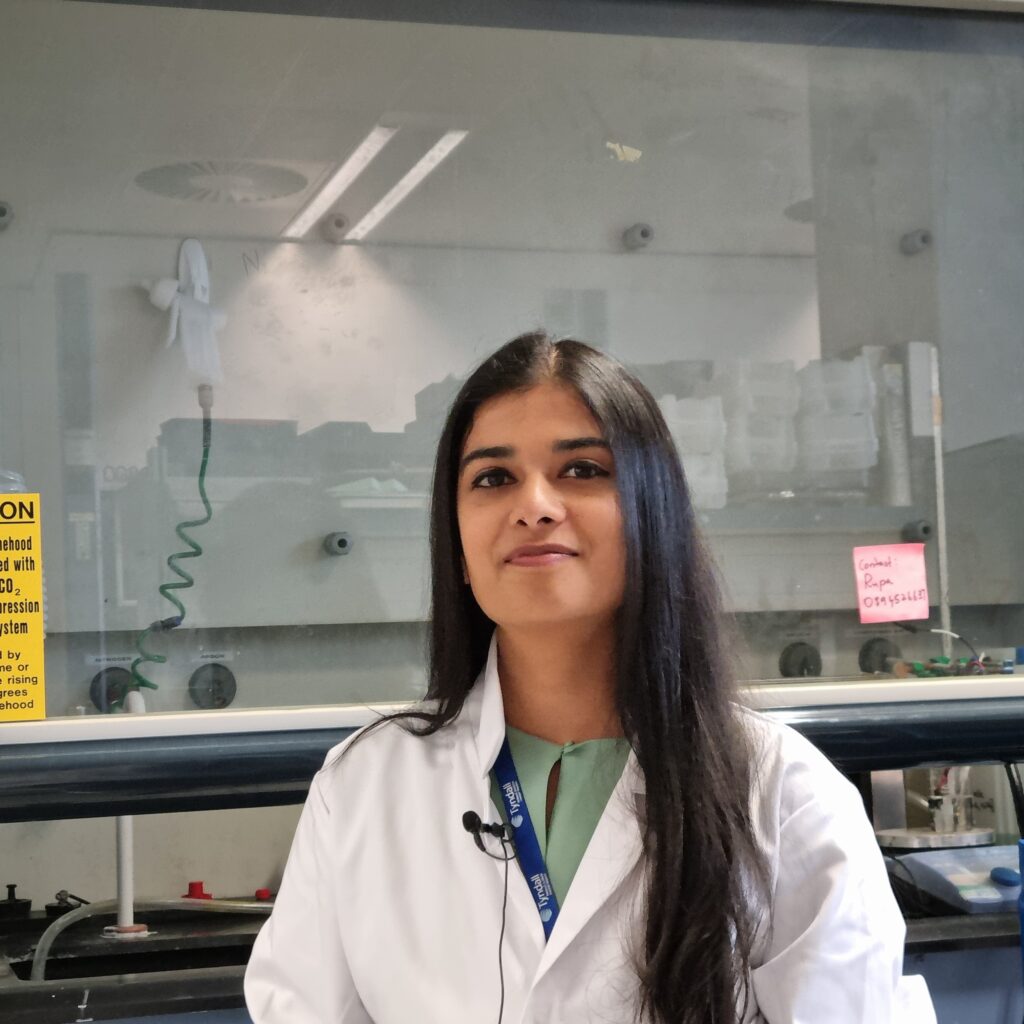As part of the EU-funded TRANSLATE project, PhD researcher Rupa Ranjani Palanisamy is working at the intersection of electrochemistry, sustainability, and innovation. From overcoming setbacks in the lab to designing electrodes that both convert and store energy, her journey is a masterclass in scientific creativity and resilience.
We sat down with Rupa to learn more about her research, inspirations, and vision for a battery-powered future.
Q: Tell us a bit about your journey—from India to Ireland, and into the TRANSLATE project.
Rupa: I started applying for PhD positions during the COVID pandemic. Travel restrictions made things tricky, but Ireland had relaxed some measures just in time. I found that the TRANSLATE project aligned closely with my master’s research on supercapacitors, and with two publications under my belt, I was fortunate to be selected.
When I joined, I connected with researchers at Tyndall National Institute, who had great facilities for electrochemical analysis. That’s how my focus shifted to electrode fabrication for both energy storage and thermal energy conversion.

Q: What exactly is your role within the TRANSLATE project?
Rupa: My research explores materials that can do two things: convert heat into electricity, and store that electricity for later use. That dual functionality is the heart of my PhD thesis.
TRANSLATE is all about making thermal energy useful—so I thought, why not store it too? By designing electrodes that act as both converters and supercapacitors, we reduce the need for separate systems. It’s more efficient, more compact, and more sustainable.
Q: Were there any major challenges in your PhD journey?
Rupa: Absolutely. In my first year, I was working with a fragile material called anodised aluminium oxide (AAO) membranes. These were central to my initial thesis plan, but they kept breaking during experiments—even after a year of trying to optimise them.
Eventually, we had to pivot. We moved to commercial membranes and focused more on the electrodes. That shift taught me an important lesson: sometimes, letting go of a plan is necessary for progress.
Q: Can you tell us about your latest research and publications?
Rupa: We’ve recently published a paper on the dual functionality of nickel cobalt selenide electrodes. They showed strong performance in both energy storage and thermal conversion. However, cobalt and selenide aren’t ideal—they’re toxic and not very sustainable.
So we’re now working with layered double hydroxides (LDHs), which are greener and have a unique layered structure that boosts ion storage and electrochemical activity. Early results are promising, and we’re preparing a new manuscript comparing our findings to existing literature.
Q: You mentioned combining battery and capacitor technologies—what’s that about?
Rupa: I’m working on what’s called a supercapattery—a hybrid device that combines the best of both batteries and supercapacitors. Supercapacitors charge in seconds but discharge quickly. Batteries take longer to charge but last longer.
Imagine a device that charges in seconds and lasts for days—that’s the goal. It could transform how we power everything from smartphones to electric vehicles.
Watch:
Q: Why the focus on green and sustainable materials?
Rupa: At first, I was simply fascinated by electrochemistry. But then I learned more about the environmental impact of materials like cobalt. For example, children in poor countries are exposed to harmful mining conditions to extract cobalt for batteries.
Also, growing up in India, I’ve seen climate change firsthand—temperatures are rising rapidly. It became clear to me that if we want a sustainable future, we need to start with sustainable materials. As researchers, we have a responsibility to think beyond performance and consider ethics and impact.
Q: What are your future plans after TRANSLATE and your PhD?
Rupa: I’d like to move into industry, particularly battery or energy storage companies. Academic research is important, but I want to see the real-world impact of my work—products that people can use, that improve lives, and that reduce environmental harm.
I’m also interested in emerging areas like battery recycling. Imagine recovering and reusing the nickel and cobalt from old batteries—it would massively cut down on e-waste.
Q: With so much automation and wireless tech, do you think your work aligns with the future of energy?
Rupa: Definitely. Everything is becoming battery-dependent—cars, devices, even homes. In Ireland, for example, people are switching to automatic electric cars. In the near future, fossil fuels will be gone.
But that means the pressure is on: batteries must become faster, cleaner, and more efficient. Our work on dual-function materials and hybrid devices fits perfectly into this vision of sustainable innovation.

Q: What was it like working in a collaborative, multi-country project like TRANSLATE?
Rupa: At first, it was overwhelming—especially the theoretical discussions with our partners at Technische Universität Darmstadt! But over time, I started understanding their models, and we found ways to match their simulations with my lab results.
I’ve also worked closely with University of Latvia. They’re testing my LDH electrodes for sodium-ion batteries, which are even more sustainable than lithium-based ones. It’s been amazing to see how my materials have potential across multiple applications.
Q: Any final thoughts?
Rupa: Yes—heat is one of the cheapest and most wasted forms of energy. If we can harness it efficiently and pair it with sustainable storage, we can make a big difference. I believe the future will rely heavily on electrochemists, machine learning, and interdisciplinary collaboration to make that happen.
TRANSLATE is just the beginning.
Find us on X, LinkedIn, Bluesky and YouTube
Related read: Nanowood: A Simple Approach to a Complex Nanomaterial


